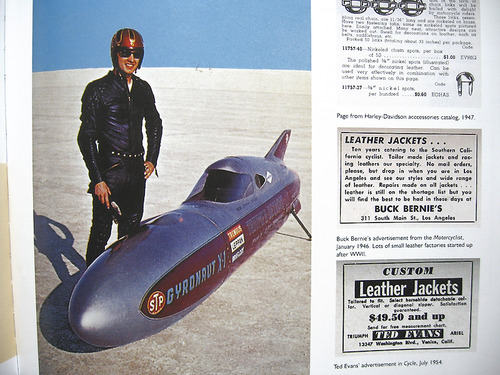
If you’ve ever caught yourself admiring a leather motorcycle jacket, you’ll love these photos. These were taken from Rin Tanaka’s book Motorcycle Jackets: A Century of Leather Design. Tuesday had a post about the “Pre-Dawn” and “Sport Jacket” eras. Today’s is about “The Golden Age” of motorcycle jacket design.
The Golden Age is short – starting just after the war in 1945 and ending in the mid-1950s. Jackets in this period were characterized by a “W” collar, bi-swing or full-swing back, and a kidney panel “action back” with belt loops. Details that we only saw glimpses of in the Pre-Dawn and Sport Jacket eras became staples in this period. The fronts were always closed with zippers (usually Talon or Conmar, although Crown’s were the best). Sleeves were also zippered, epaulets were usually present (some decorated with spot work), and holster-shaped double pockets on the front were a common feature. And where most leather jackets before were brown, we see the emergence of the black leather jacket in The Golden Age. This is essentially the period that defined what we think of as the “quintessential motorcycle jacket”- a kind of design that was immortalized by Marlon Brando’s performance in The Wild One.
Tanaka’s chapter on The Golden Age is organized by manufacturer, and it starts, rightfully, with Harley Davidson. One of their best jackets between the early to late 1940s was this model called the “Cycle Champ. You can see iterations of it here (note, these are all horsehide).
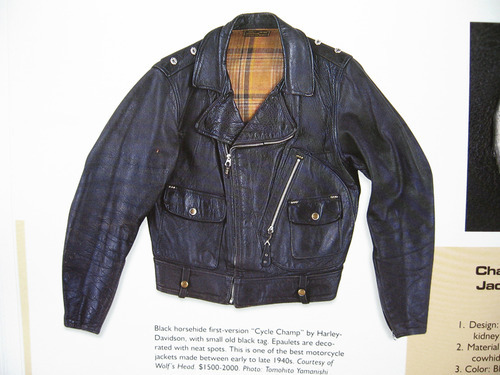
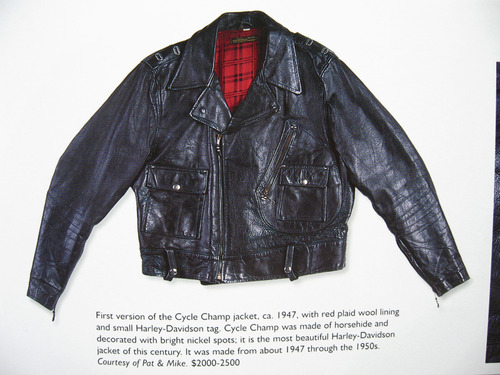
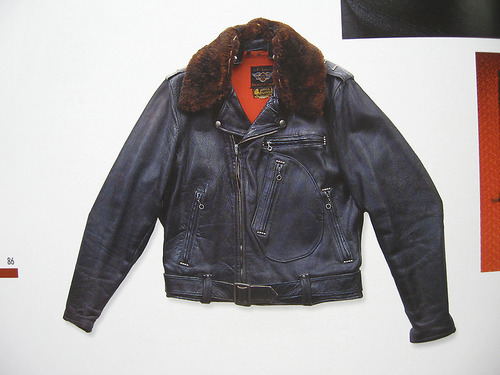
Just for fun, here are some of their racing sweaters. The blue one was made by Dehen of Portland, Oregon. You can still find sweaters like these on eBay from time to time, although don’t expect prices to be cheap.
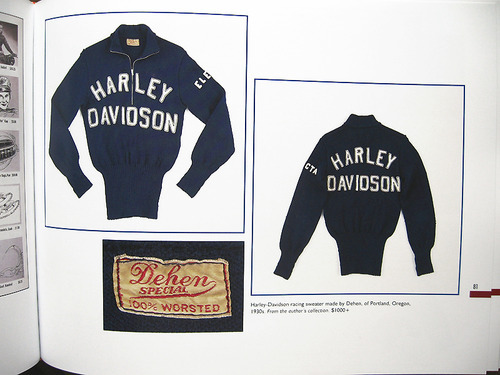
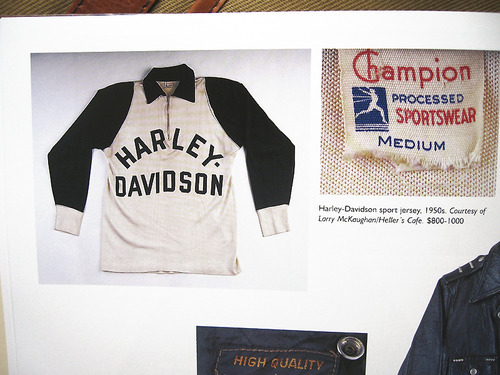
A couple more models, including a “W-style” jacket with some interesting spot work.
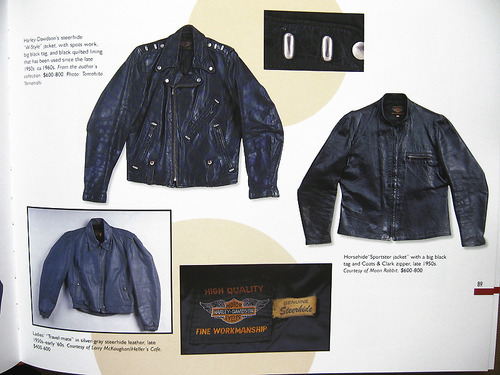
Next we have Buco, a company that was started in 1933 by Joseph Buegeleisen in Detroit, Michigan. The company’s name comes from the “Bu” in Buegeleisen and “co” in company. Buegeleisen got his start by selling motorcycle accessories to Harley-Davidson and Indian riders (mostly windshields, saddlebags, and gloves), before moving on to high-quality motorcycle jacket production in the mid-1940s. Buco had their heyday in the 1950s, and then – when the company was sold off to Ford’s seatbelt company, American Safety Equipment Corporation, in 1966 – the company put more emphasis on their helmets and less on their leather jackets. It’s said the quality was never the same.
Here we see some of their early black horsehide models, including the first two ever – the JH-1 and J-21. Some nice black and red wool linings were put into these.

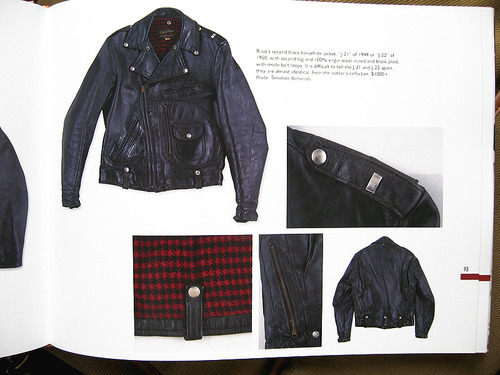
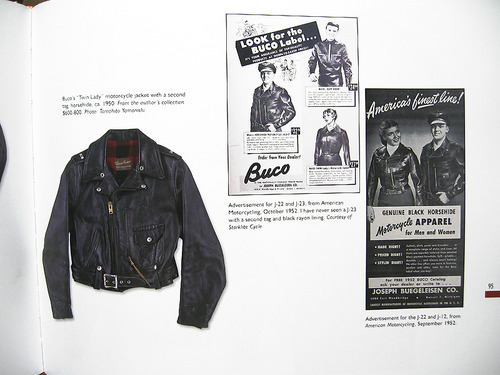
Next, we have my favorite, and likely to be my next leather jacket purchase. This is Buco’s black horsehide racing shirt, the J-100. Cut trim and unlined, these were meant to fit very close to the body. A number of Japanese companies still do reproductions of this model today. Ethan Newton had an awesome one made for him by The Few, and I was thinking about getting one from The Real McCoys until I saw this knockout piece on eBay. Really wish I had bid on that jacket.
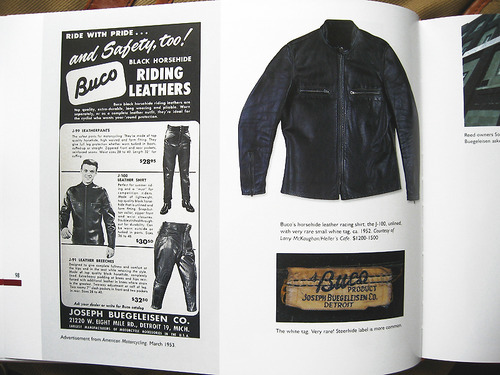
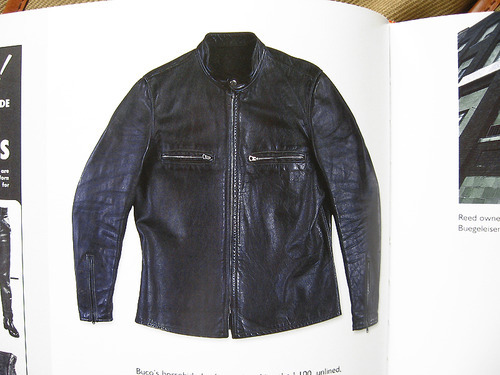
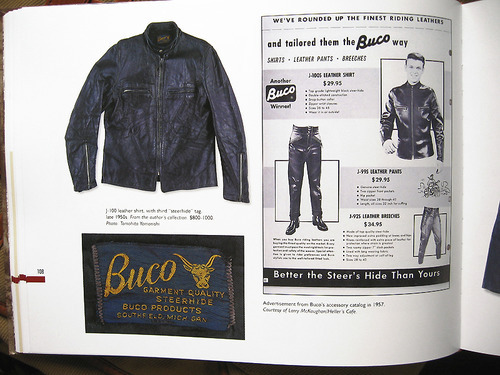
Speaking of awesome painted designs (you should have clicked that eBay link, if you don’t know what I’m talking about), check out this Buco J-82 steerhide jacket with a “Thunderbird” painting on the back.
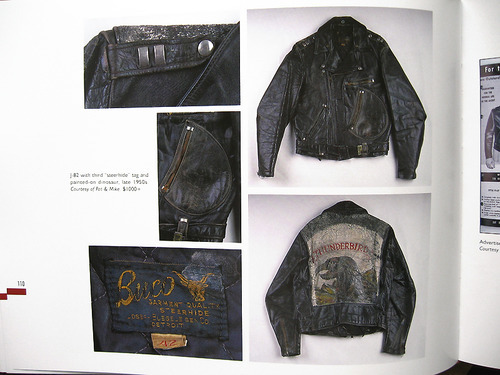

Not all decorations have to do with paint and graphics, of course. Here’s a custom J-24 made with some really wonderful spots work.

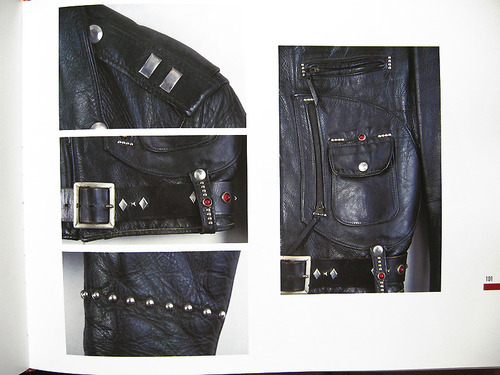
Here are some of the helmets and bags Buco later became known for. Again, many still being reproduced today by some Japanese companies.
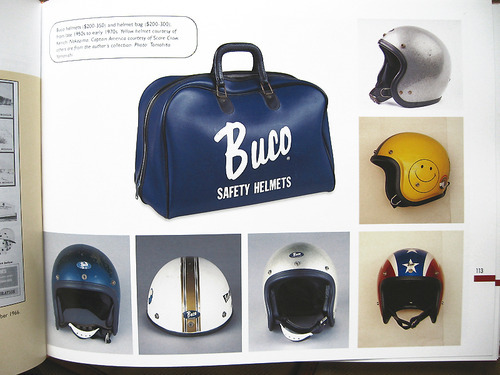
Next, we have Indian Motorcycle Company of Springfield, Massachusetts. They were the biggest motorcycle company in the world until the 1930s. Unfortunately, they only made one men’s jacket model, the “Ranger,” and one women’s model, the “Rangerette,” before their bankruptcy in 1953. After 1953, ownership of the company passed through a few hands. Some English names such as Royal Enfield (1955-59) and Matchless (1960-69), and a few American names as well. In 1999, they were revived again, although I don’t know anything about their current quality.
Anyway, here’s the original Rangerette, with the front zip moving from left to right, and the accompanying male model “Ranger” with the zip going the other way.
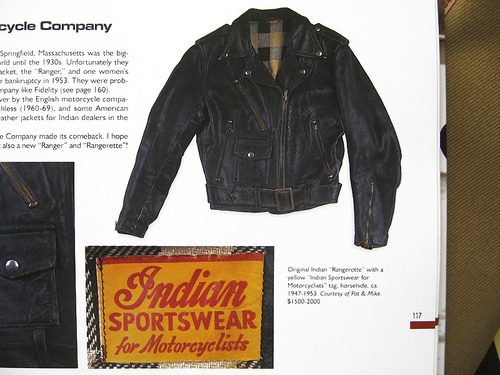
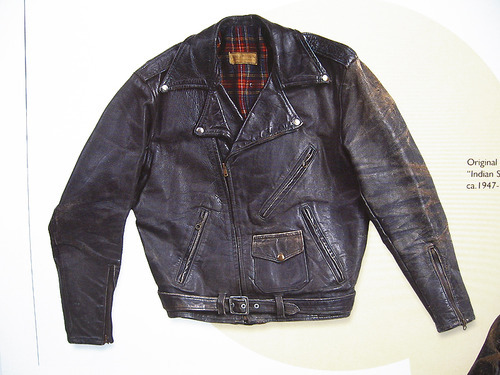
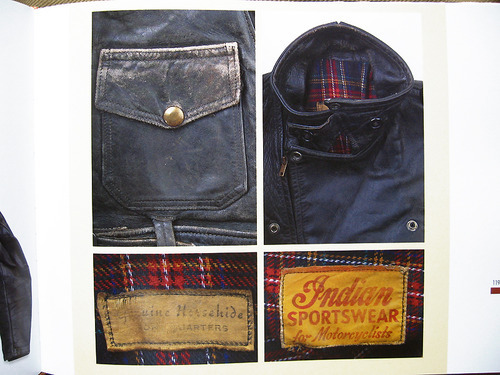
My favorites from the Indian Company are probably their knits and jerseys. Some of these logos can still be found on some Japanese brands. The Flat Head, for example, often produces t-shirts with that side profile of an Indian chief’s head.

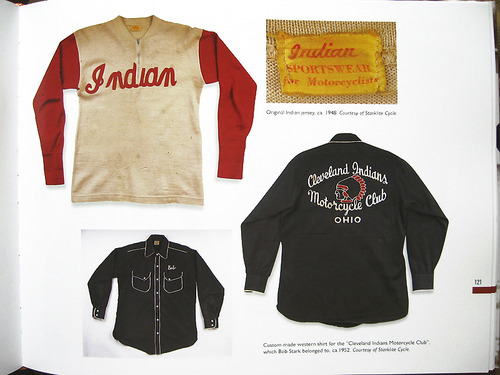
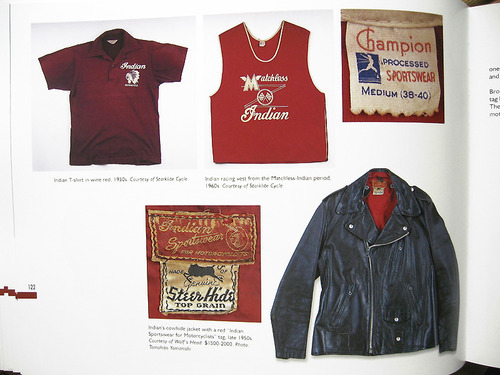
The rest of the chapter goes through a number of other companies – Beck, Trojan, Schott, etc. If you want to see more, you’ll have to buy the book. I tried searching around for better pricing, but unfortunately, it seems used books in this title are rare. The list price is the list price, and you can order the book through Amazon.
We’ll end today with Arlo Guthrie, who’ll tell you what he wants instead of a pickle, a tickle, or death.
